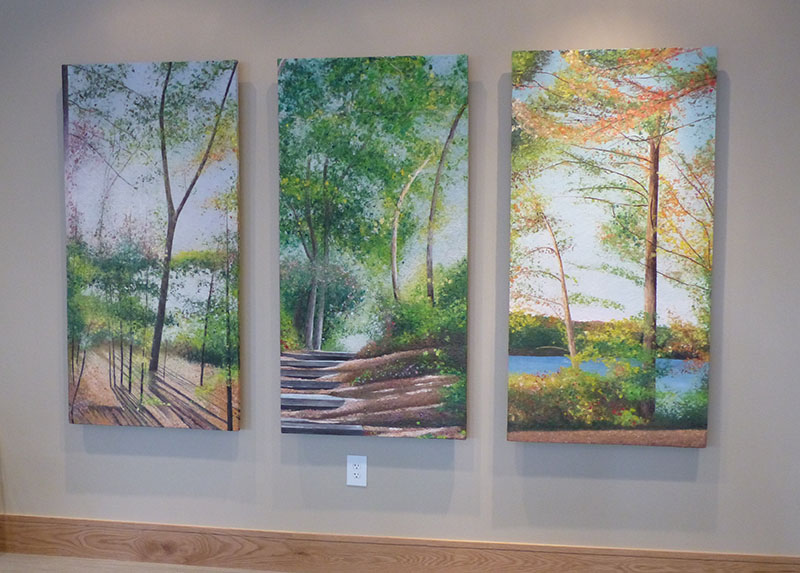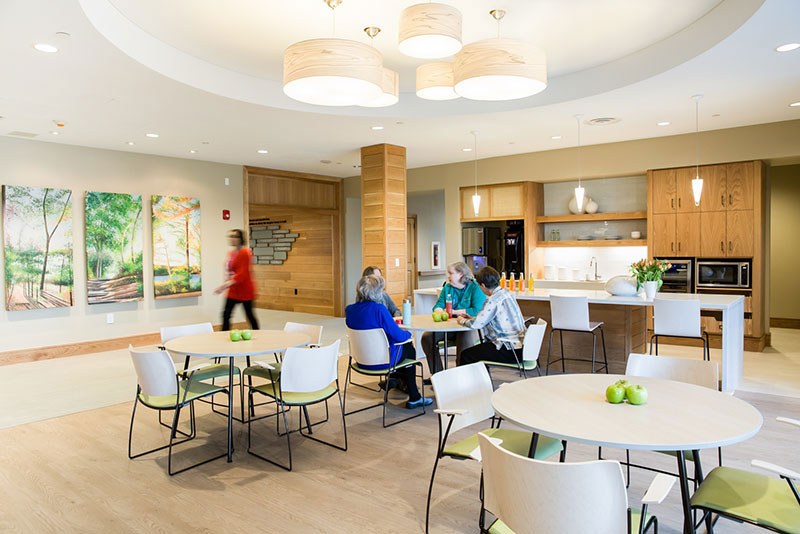Read more articles by Meg Black “A Work of Art is Not Complete Until it is Shared” and “An Art Project with Hospice in Memory of My Father”and“Connecting The Kinesthetic With The Aesthetic”
The Art Celebrates the Beauty of Nearby Walden Woods
By Meg Black

When I was asked to create art for the new Care Dimensions Hospice House in Lincoln, MA, I knew where to go for inspiration.
I sought to create a group of three paintings inspired by the natural environment of nearby Walden Pond and its most famous resident, Henry David Thoreau, who lived in a small cabin on the property for two years following the death of his brother.
This grouping of paintings, which I have titled, “How Paintings Tell a Story”, attempts to celebrate the beauty of Walden Woods while simultaneously acting as metaphors for life’s story, much as Thoreau did in his many essays on the same subject.
The painting on the left suggests sunrise seeping through the trees, breathing life onto the earth. The light source coming from behind and casting a long shadow mimics stage lighting, giving the painting a theatrical quality. This sets the stage for a life to come, a promise of a future to be explored. The trees point to the right, guiding the viewer to the painting in the center.
The central painting includes a pathway in the composition. This suggests moving forward into unknown terrain, climbing a path that is a bit crooked and uneven, but guided by the light that is now in the background. The open space in this composition is on the right of the painting – the light blue of the sky that holds a sense of distance, a way forward; the bend of the trees guiding the wanderer into the distance.
The painting on the right contains the body of water that one expects to find on Walden Pond: calm, cool, and a deep Prussian blue that bespeaks a brisk New England autumn day. The trees shift to the left, allowing the viewer to return to the first painting and engage with all three paintings as a whole.
It is my hope that visitors to the Care Dimensions Hospice House in Lincoln will find peace and serenity…

The trees are included in all three of the paintings to represent the rootedness of life. The water is symbolic of ephemeral nature, another visual and spiritual symbol recognized in many cultures throughout history.
As a naturalist, Thoreau understood that the path to a greater understanding of life is through an understanding of the natural world around us: “We can never have enough of nature,” he wrote. “We must be refreshed by the sight of the wilderness with its living and its decaying trees.”
It is my hope that visitors to the Care Dimensions Hospice House in Lincoln will find peace and serenity as they rest in front of these paintings, whose story mimics those of the people they have come to visit.
Read more articles by Meg Black “A Work of Art is Not Complete Until it is Shared” and “An Art Project with Hospice in Memory of My Father” and “Connecting The Kinesthetic With The Aesthetic”
Visit Meg Black’s website megblack.com

Leave a Reply